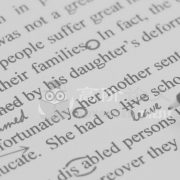英文论文修改:中国特色
英文论文修改:中国特色
重庆是中国西部的一个老城区,但在抗日战争期间,它也有自己的重要地位,很可能曾是那里的首都。它位于长江对岸,一直是渝中区一个历史悠久、文化底蕴深厚的地区。这些房屋大多是老式建筑,主要以木材为主要成分,其他一些房屋则采用砖和水泥。人们更加满足,和平地实践他们的宗教,没有矛盾(Guillain, 2008)。它从1940年赢得的对日战争中恢复过来,人民与席卷美国并在全球蔓延的资本主义运动发生交集的时机已经成熟。那里的人民在战争中失去了生命和亲人,现在要求后代的和平与进步。这导致了更多的人变得自力更生,并开始教育他们未来的生活。城市或地区的历史可以追溯到3000年由Ra文化的主要实践,这是一个大的河镇在中国无休止的腹地,有一个特别的地方在人民实践和丰富的文化遗产明显信仰他们的宗教。
长江是世界第三大河,这说明了长江的重要性以及非居民对它的看法(Ruokanen and Huang, 2010)。该地区的视觉形象是关于山,自然,充满荒野,围绕着所有这些自然的山峰和上帝的礼物居住在城市的人们。这些房子都是木制的,很大,敞开着,更隐蔽,因为那里人少,有更多的地方可以做事情和实践他们的宗教仪式。战后,该地区更加和平,随着人口的增长和国内移民的涌入,该地区对自然美景、丰富的文化和机遇有了逐渐发展的需求。场地的颜色不那么花哨,每个设计和室内工作都很简单。有些房子仍然保留着原来的质量和风格。这些房子离河更近,颜色也更随意,尽管有些房子是红色的,这被认为是一种文化丰富的颜色,在中国宗教中有自己的重要性。
英文论文修改:中国特色
Chongqing was an old fashioned location of western China, though has its own importance during the war with Japan where it probably served as a capital. Situated across the Yangtze River it was always a historically rich and culturally focused region of the Yuzhong district. The houses were more old fashioned build majorly with wood as a prime component and brick and cement in some other houses. The people were more content and practiced their religion peacefully without contradictions (Guillain, 2008). It had recovered from the 1940 war with Japan which it won and the time was ripe for the people to intersect with the capitalism movement that had taken the US by storm and was spreading worldwide. The people there had lost lives and loved ones in the war and now demanded peace and progress of the future generations. This led the way to more people becoming self-reliant and started to educate them for future life. The history of the city or the region can be traced back to 3000 years which consisted of the Ra culture being the prime practice It was a large river town within the endless hinterland of China and had a special place of being culturally rich evident in the people’s practice and belief in their religion.
The river Yangtze is the third largest river of the world and this speaks the significance that it possessed and the way it was viewed by the non-residents (Ruokanen and Huang, 2010). The visual image of the region speaks about mountains, nature, full of wilderness and surrounding all these natural peaks and gifts of God lived the people of the city. The houses were wooden styled, large, open, and more secluded, as there were few people and more place to do things and practice their rituals of the religion.The region was more peaceful after the war and had a gradual demand of development with the rise in population and influx of domestic migration for its natural beauty, rich culture, and opportunities. The colours of the location were less gaudy and had simplicity involved in each designs and house work. Some of the houses still remain which are of old quality and possessing old flair of their own. The houses were more near the river and had more laid back colours though some houses had red colour which was considered to be a culturally rich colour and had its own importance in the Chinese religion.







